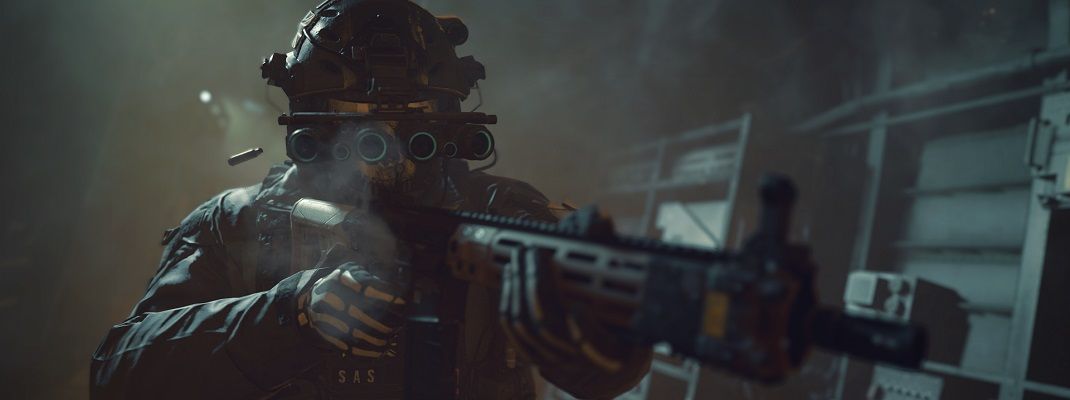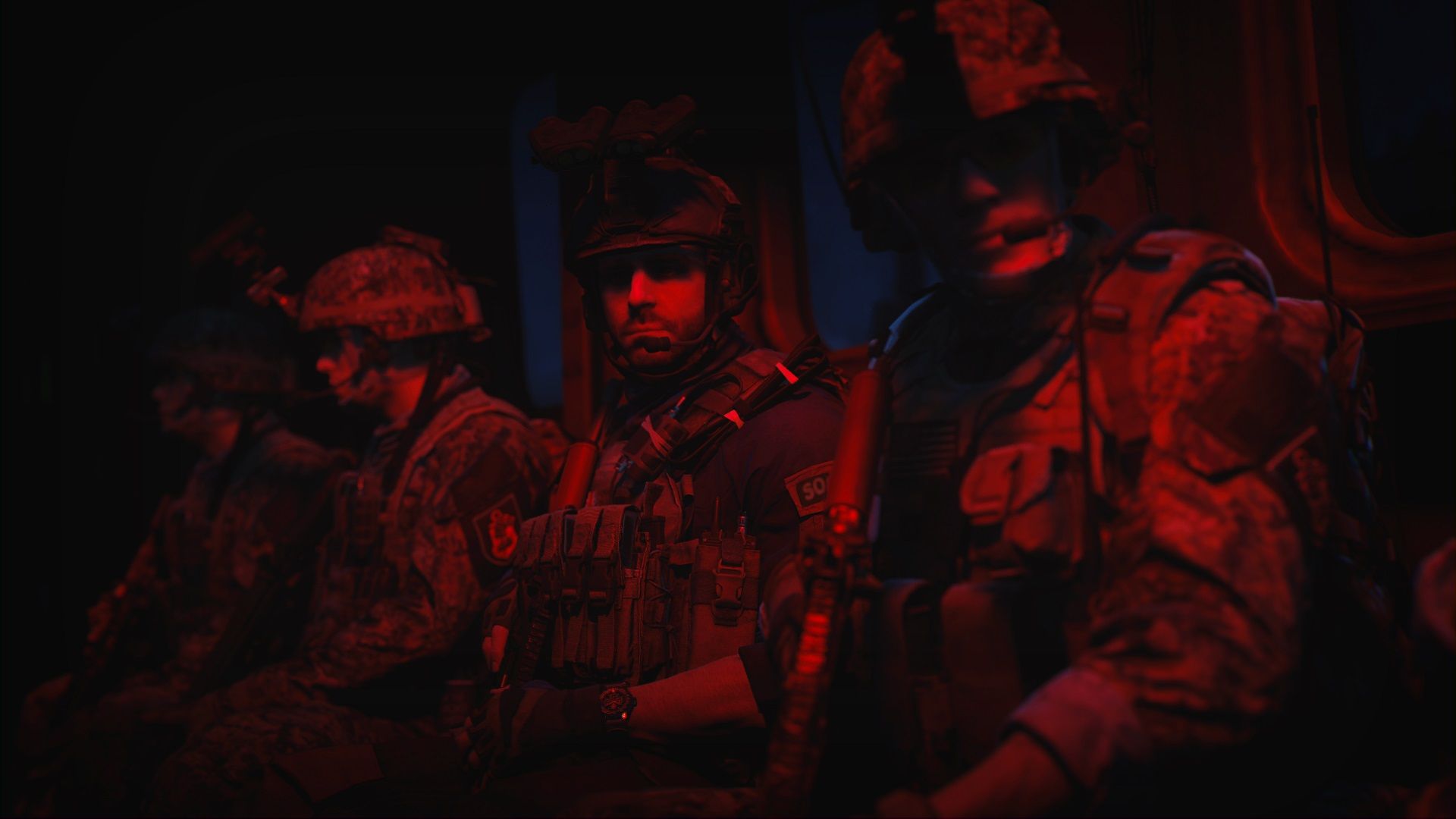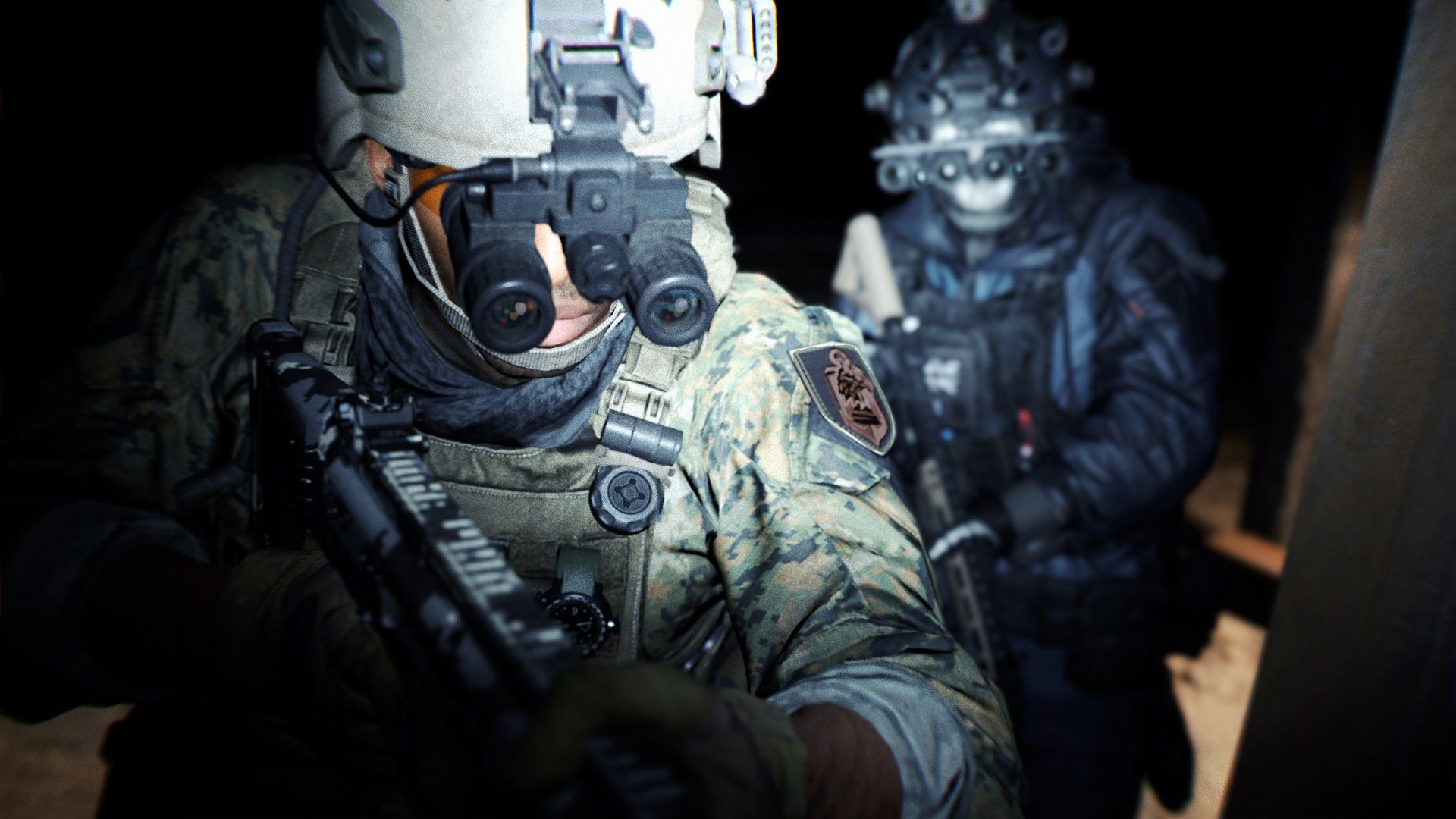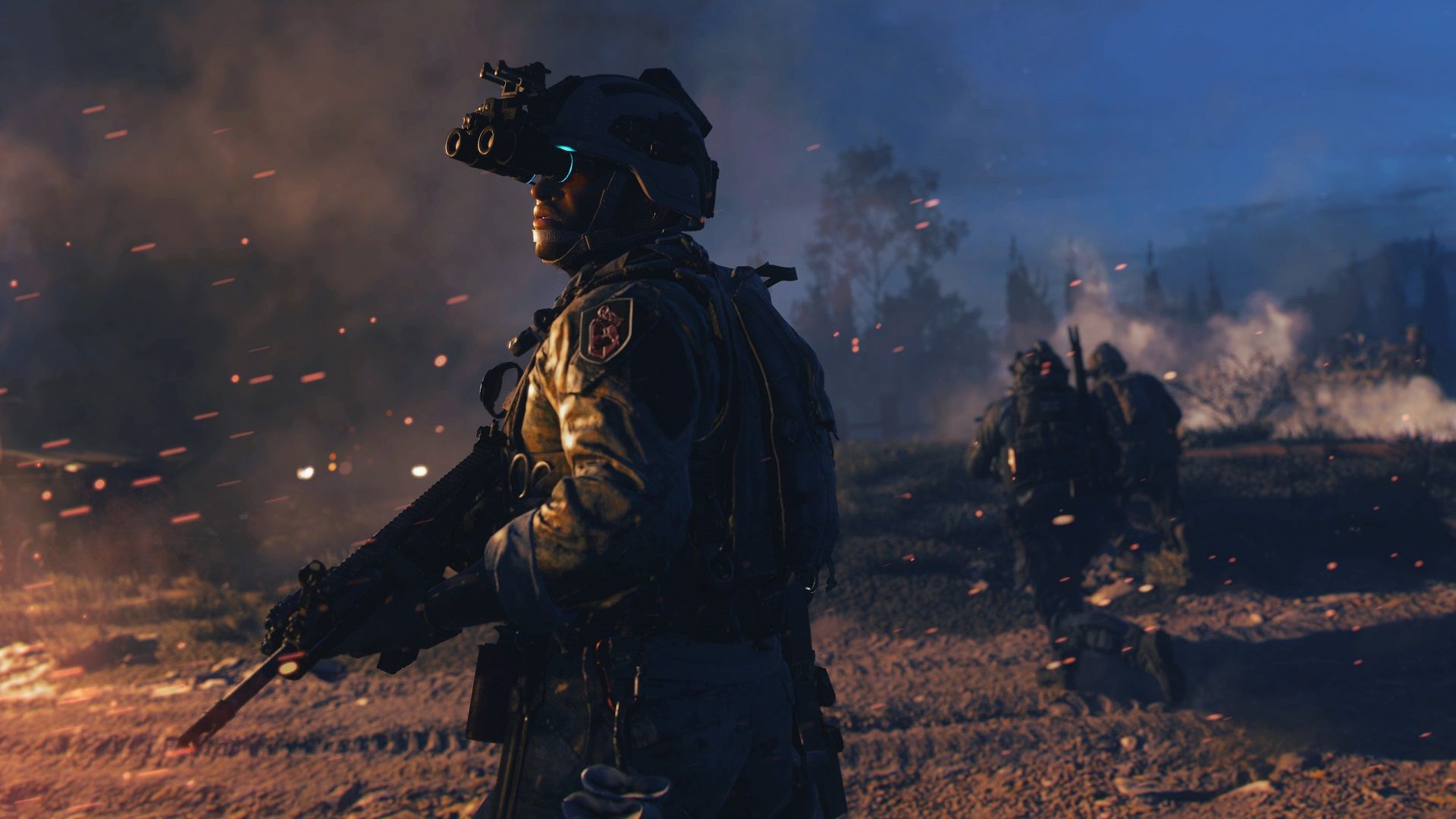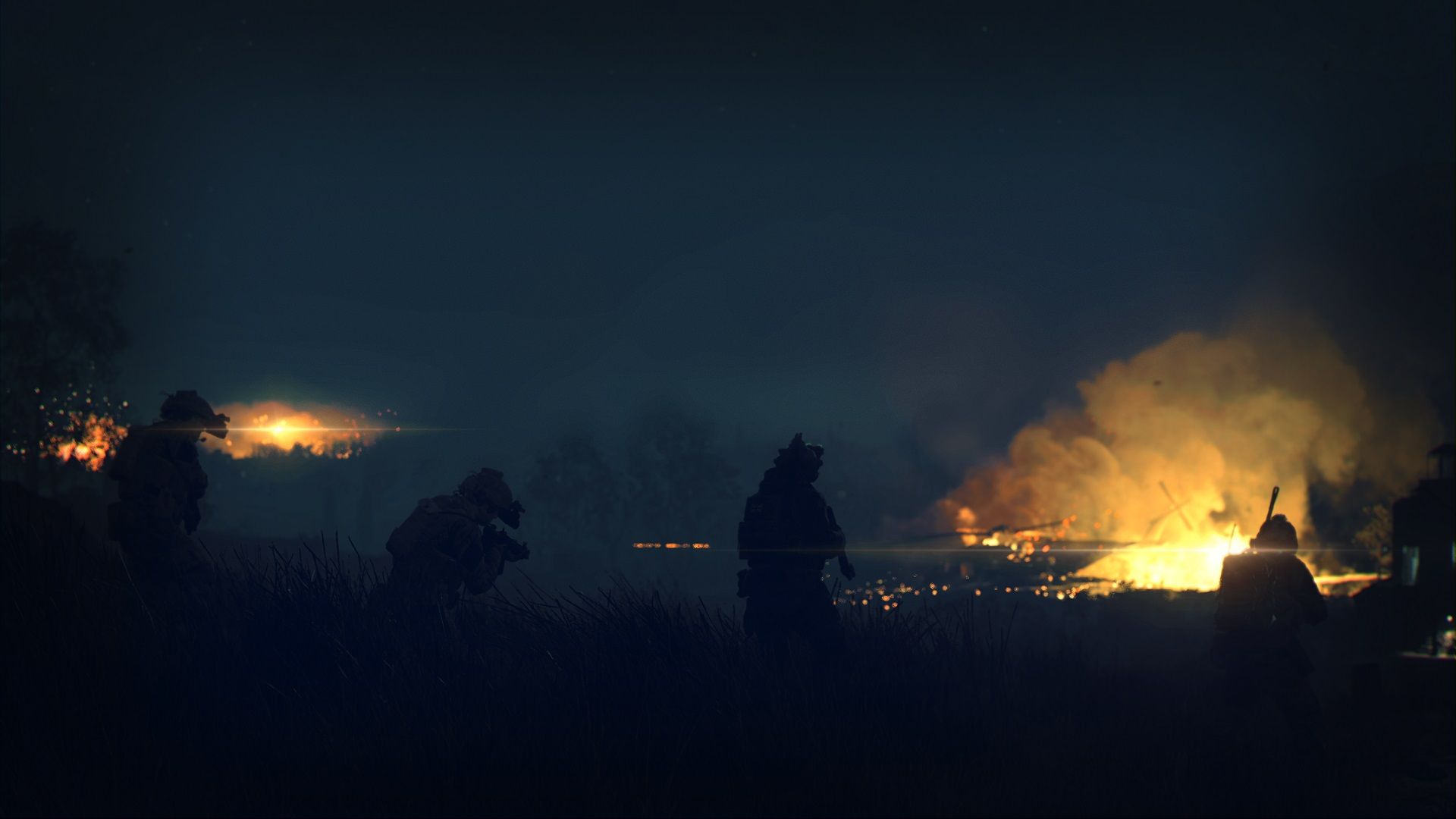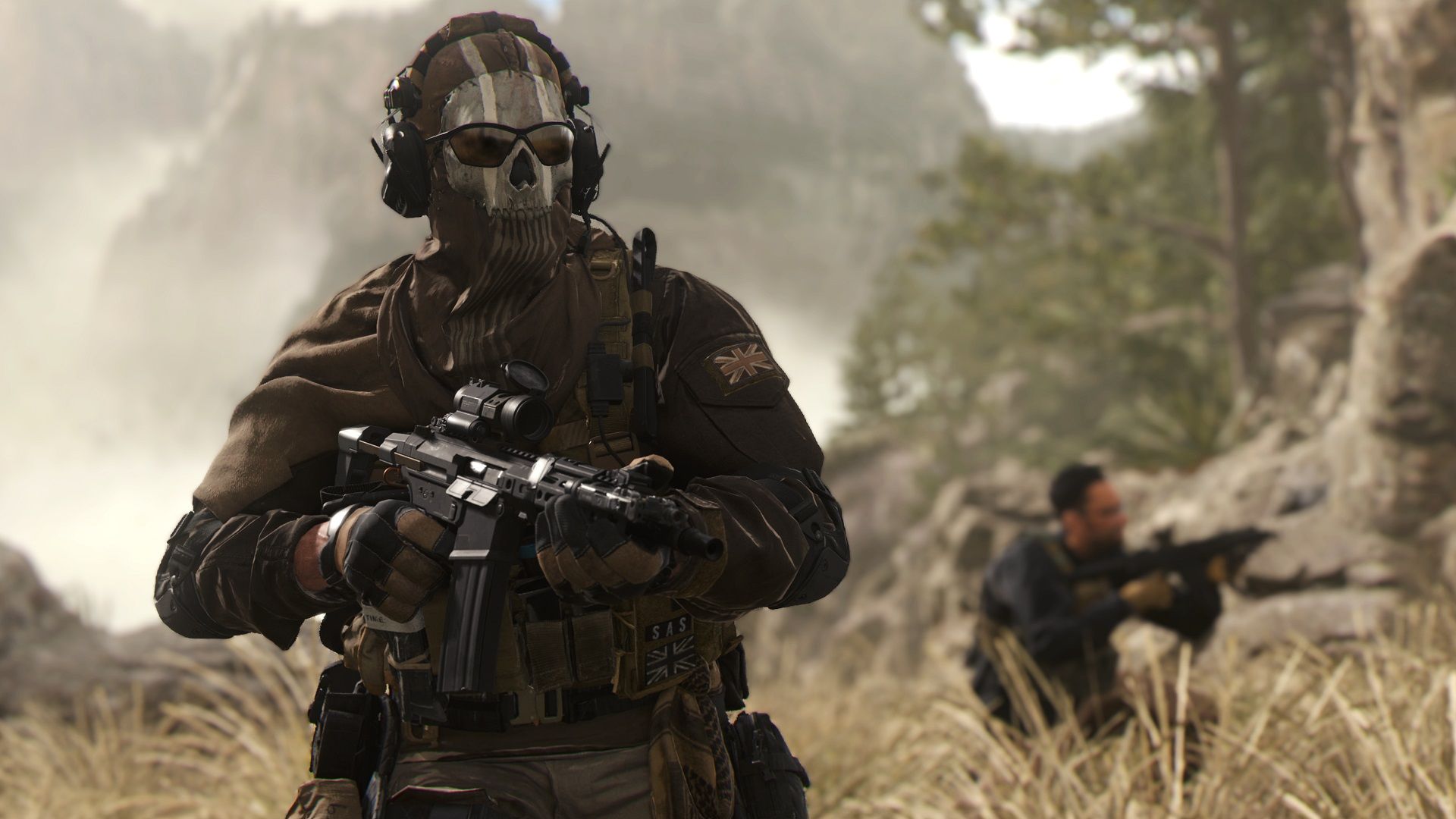Call of Duty: Modern Warfare II and the Warzone successor are positioned as a new era for Call of Duty. Modern Warfare 2019, Black Ops Cold War and Vanguard were a major paradigm shift for the franchise with various mechanics, features, and of course, Warzone tying all three closer together than in any previous era. With this new era coming in quickly, we got a chance to learn directly from Infinity Ward what precisely that means for this year’s game.
To best understand Infinity Ward’s approach to Modern Warfare II’s multiplayer and the Warzone successor, it’s essential to understand the core pillars of this new era. First and foremost, the era is grounded in a unified Call of Duty engine capable of spanning the entire series. Infinity Ward confirmed they’re working and sharing code with Treyarch and Sledgehammer Games when questioned further. That technology feeds into the next Warzone, which will feel like an extension of Modern Warfare II. That includes making Ricochet, the anti-cheat system, prominent in both Modern Warfare II and the Warzone successor on day one.
That focus on cross-studio sharing should lead to more consistency for Warzone, something sorely missing from the previous era with Black Ops Cold War running on a different engine from Modern Warfare and Vanguard. That’s excellent news that should keep mechanics and balancing consistent across the individual games and Warzone, though it does create concern that the games might become too homogeneous. Infinity Ward stressed that each studio will still bring its own unique style to Call of Duty. Without knowing what Treyarch and Sledgehammer are up to, however, it’s hard to know how different those titles are from Modern Warfare II.
Another theme of this era is extending Call of Duty to new platforms. First off, the franchise is finally returning to Steam after it abandoned the platform for Battle.net exclusivity, starting with Black Ops 4. In addition, Warzone will also eventually land on mobile, bringing the battle royale experience to iOS and Android devices at some point.
For this entry, Infinity Ward’s approach to Modern Warfare II’s multiplayer builds on 2019s successes while fixing some of its shortcomings. The player movement mechanics, Field Upgrades, interactable doors and the Gunsmith all return. Among all the returning features, though, there was also an acknowledgment that Modern Warfare 2019 got plenty wrong that Modern Warfare II will fix.
The most prominent of those criticisms involves the pacing. After launch, much of the meta involved moving slowly or outright camping to avoid detection from footsteps. According to Infinity Ward, however, the majority of the content in Modern Warfare II was built to facilitate rusher (attack), sentinel (defend) and stalker (stealthy) playstyles. So, that should hopefully mean less camping and speedier gameplay.
There are also more options for moving around the map. The player movement mechanics from Modern Warfare are back, including the tactical sprint, mounting and slide. New to player movement is the ledge hang that allows players to peek over an edge before deciding to climb up, and diving, a safer way to dodge incoming bullets compared sliding. The most significant change to player movement and map design, however, is swimming.
Call of Duty: Modern Warfare II is the first Infinity Ward developed title to introduce swimming mechanics into its multiplayer suite. Taking notes and building off what Treyarch has accomplished with the feature, players will be able to use water to sneak up on enemies and access different parts of the map. Unlike Treyarch’s swimming, however, the water in Modern Warfare II will affect more than just player movement.
Nearly every vehicle and piece of equipment has been designed for use on land and in water. For example, a land mine placed in the water will deploy little balloons that allow it to float on the surface. Likewise, the new Inflatable Decoy Field Upgrade inflates in different positions, whether deployed-on land or in water. Treyarch delivered great maps that incorporated swimming mechanics in both Black Ops III and Black Ops 4. Hopefully, Infinity Ward can also design some great maps around these mechanics.
Speaking of maps, Call of Duty: Modern Warfare II will feature two different kinds; Core Maps and Battle Maps. Core Maps are like they sound, maps built for the traditional 6v6 multiplayer experience. They’re small and refined and take place in locations around the world. Infinity Ward showcased three; Museum, set in Spain; Grand Prix, a race track based in Asia; and Farm 18, a training facility in an undisclosed location. So far, there’s a good variety in locations compared to 2019s mostly brown desert maps. Call of Duty: Vanguard’s launch roster of sixteen core multiplayer maps was astounding, and hopefully, Infinity Ward is prepared to deliver a similar amount at launch. Six 6v6 maps at launch again is not acceptable.
Battle Maps are the large exploratory maps available in Ground War and will likely be a part of the unannounced third mode and Warzone. According to Infinity Ward, these large-scale combat arenas were built with lessons the studio learned while making Verdansk. The studio showed us two of these maps. First was Sa’id, a straightforward urban center that mixed and matched elements of core multiplayer with the sandbox action of Warzone. The second was Sarrif Bay, a tourist fishing village that incorporated swimming mechanics. Much like with the Core Maps, there’s no indication about how many Battle Maps will be available at launch.
In terms of game modes, Ground War, Team Deathmatch and Domination are all returning. New to the series are one-life elimination modes Knockout and Prisoner Rescue. In Knockout, two teams compete to capture and hold a package. Meanwhile, Prisoner Rescue tasks one team with rescuing hostages and the other with preventing that. Both modes incorporate revive mechanics that allows live team members to resurrect their fallen teammates. It's currently unknown if Infinity Ward intends on incorporating any features like Combat Pacing or game modes like Patrol and Combined Arms introduced in Black Ops Cold War and Vanguard into Modern Warfare II.
Finally, players can also expect new Field Upgrades and equipment to outfit their custom classes. These include the Tactical Camera that attaches to walls and detects enemies as they pass by, or the Drill Charge, which burrows into a wall and then fires a grenade into the targeted room. There are plenty of new toys to play around with in multiplayer.
A quick note on the Warzone successor: while we didn’t get to see the mode outright, Infinity Ward shared that this is a new experience tied to the new era. With all the new technology and mechanics, the team confirmed that nothing would carry over from the previous three years. The current Warzone will continue to exist as a separate experience.
Call of Duty: Modern Warfare II is the start of a new, more unified era for Call of Duty. While we may not fully understand what that means until we see the next Treyarch and Sledgehammer titles, Modern Warfare II’s multiplayer does shed light on the topic. It means building content that caters to different play styles, iterating on what worked and altering what didn’t, embracing new ways to move around the map and creating content players want to play on day one. It’s a tall order, but hopefully Infinity Ward’s complete vision for multiplayer comes together for players to experience later this year.
Call of Duty: Modern Warfare II launches October 28 on PS5, Xbox Series X|S, PC, PS4 and Xbox One. The Call of Duty: Warzone successor will launch later on unknown platforms. For details on the campaign, be sure to check out our preview and interview with Infinity Ward's narrative heads.

